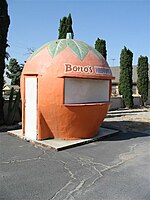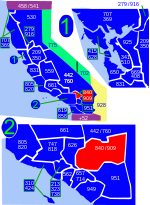Fontana, California

Fontana is a city in San Bernardino County, California, United States. Founded by Azariel Blanchard Miller in 1913, it remained essentially rural until World War II, when entrepreneur Henry J. Kaiser built a large steel mill in the area. It is now a regional hub of the trucking industry, with the east–west Interstate 10 and State Route 210 crossing the city and Interstate 15 passing diagonally through its northwestern quadrant. The city is about 46 miles (74 km) east of Los Angeles. It is home to a renovated historic theater, and Fontana also hosts the Fontana Days Half Marathon and 5K run. This race is the fastest half-marathon course in the world.The United States Census Bureau reported that Fontana's 2020 population was 212,704, making it the second-most-populous city in San Bernardino County and the 21st largest in the state.
Excerpt from the Wikipedia article Fontana, California (License: CC BY-SA 3.0, Authors, Images).Fontana, California
Arrow Route,
Geographical coordinates (GPS) Address Nearby Places Show on map
Geographical coordinates (GPS)
| Latitude | Longitude |
|---|---|
| N 34.1 ° | E -117.46666666667 ° |
Address
Arrow Route
92335
California, United States
Open on Google Maps






